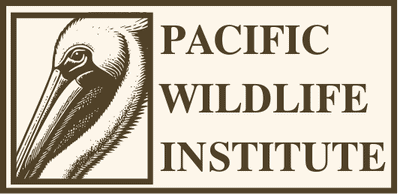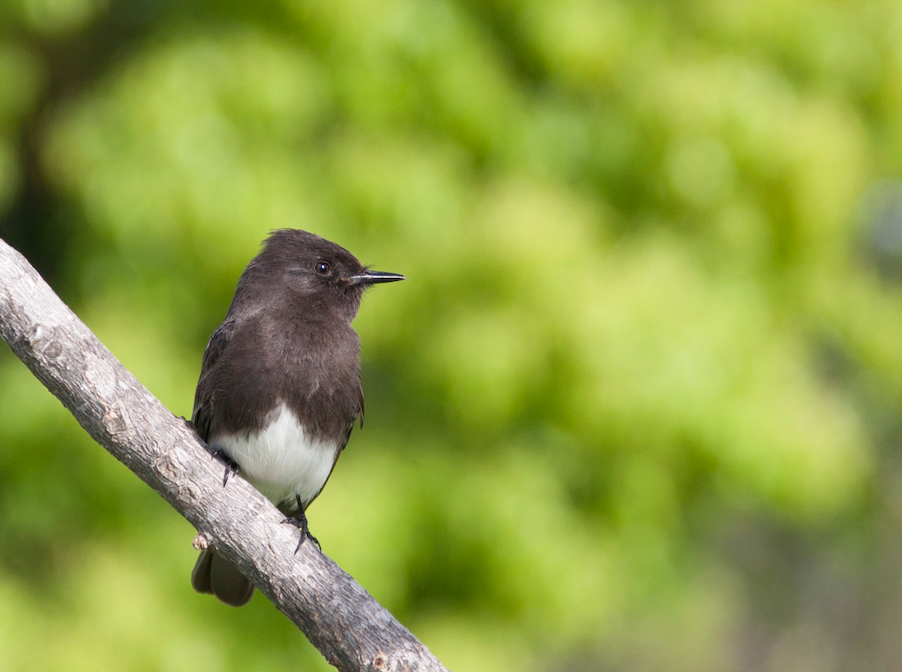Scientific Name and Classification
• Scientific Name: Sayornis nigricans
• Family: Tyrannidae
• Order: Passeriformes
Common Names
• Black Phoebe
Description
The Black Phoebe is a small passerine bird, easily recognizable by its distinctive black and white plumage. Adults typically have a sooty black head, breast, and upper parts, with a stark white belly and under tail coverts. They measure about 5.5 to 7 inches in length, featuring a short tail and broad wings. Their appearance is neat and unassuming, with males and females looking very similar, though juveniles may display a slightly browner hue on their upper parts.
Distribution and Habitat
Black Phoebes are found predominantly in the western United States, extending south through Mexico and into Central and South America. They favor open habitats near water, such as rivers, lakes, and streams, often perching conspicuously on branches or rocks close to water. They are also commonly found in urban and suburban areas, adapting well to human-altered landscapes as long as water sources are present.
Behavior
Black Phoebes are territorial and generally solitary outside of the breeding season. They are known for their “sit-and-wait” approach to feeding, perching conspicuously before sallying out to catch insects in midair with agile maneuvers. Their flight is quick and darting, typical of flycatcher species. Phoebes use their sharp calls and songs, which are a repetitive sharp “chip” and a more melodious “tsee-bee,” respectively, for communication and territorial defense.
Diet
Their diet consists predominantly of insects, including flies, beetles, and moths, which they catch in the air. They may also occasionally pick insects off vegetation or from the ground and sometimes eat small fish or tadpoles.
Reproductive Information
Black Phoebes are monogamous and often breed in the same territory year after year. They build their nests on vertical surfaces near water, using mud, moss, and grass, and line them with finer materials. The nests are typically placed under bridges, eaves, or ledges, sheltered from the elements. The female lays 3 to 5 eggs per clutch, which she incubates for about 16 days. The chicks are altricial, depending entirely on parental care, and fledge approximately 20 days after hatching.
Conservation Status
The Black Phoebe is currently listed as Least Concern by the IUCN. It benefits from its adaptability to human environments and the availability of artificial water bodies, which provide additional habitat.
Ecological Role
As insectivores, Black Phoebes play a crucial role in controlling insect populations, aiding in the maintenance of ecological balance and reducing pest populations in their habitats.
Research and Observation
Research on Black Phoebes has focused on their feeding habits, habitat requirements, and the effects of urbanization on their populations. Observational studies often track their adaptability to changing environments and the success of their breeding in relation to water availability.
Management Strategies
Conservation strategies for the Black Phoebe include maintaining and protecting riparian habitats and ensuring clean water sources. Efforts to reduce pesticide use can also support healthier insect populations, which benefit this species.
How to Attract Black Phoebes to Your Property
1. Maintain Water Features: Adding a pond, fountain, or birdbath can attract Black Phoebes by providing them with necessary water sources for drinking and bathing.
2. Provide Nesting Sites: The Nestboxes designed for Black Phoebes differ from the typical birdhouse design. They ensure that there is a suitable overhang to keep the nest dry, but still allow a lot of creative space for them to build out their nest using their favorite materials. Having other sheltered spots, such sheds or barns, can encourage phoebes to build nests on your property.
3. Landscaping with Native Plants: Using native plants in your garden can support a healthy insect population, which in turn can attract these insectivorous birds.
4. Minimize Pesticide Use: Reducing or eliminating pesticides helps ensure a robust and safe food supply for Black Phoebes and other insect-eating birds.


